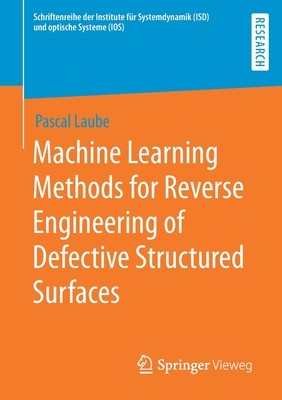
- We will send in 10–14 business days.
- Author: Pascal Laube
- Publisher: Springer Vieweg
- ISBN-10: 3658290161
- ISBN-13: 9783658290160
- Format: 14.8 x 21 x 1 cm, softcover
- Language: English
- SAVE -10% with code: EXTRA
Machine Learning Methods for Reverse Engineering of Defective Structured Surfaces (e-book) (used book) | bookbook.eu
Reviews
Description
Pascal Laube presents machine learning approaches for three key problems of reverse engineering of defective structured surfaces: parametrization of curves and surfaces, geometric primitive classification and inpainting of high-resolution textures. The proposed methods aim to improve the reconstruction quality while further automating the process. The contributions demonstrate that machine learning can be a viable part of the CAD reverse engineering pipeline.
EXTRA 10 % discount with code: EXTRA
The promotion ends in 20d.15:32:47
The discount code is valid when purchasing from 10 €. Discounts do not stack.
- Author: Pascal Laube
- Publisher: Springer Vieweg
- ISBN-10: 3658290161
- ISBN-13: 9783658290160
- Format: 14.8 x 21 x 1 cm, softcover
- Language: English English
Pascal Laube presents machine learning approaches for three key problems of reverse engineering of defective structured surfaces: parametrization of curves and surfaces, geometric primitive classification and inpainting of high-resolution textures. The proposed methods aim to improve the reconstruction quality while further automating the process. The contributions demonstrate that machine learning can be a viable part of the CAD reverse engineering pipeline.


Reviews